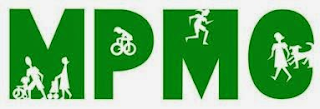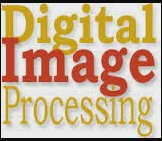Tricky ECE VIVA Questiions and Answers for Engineering students.
1. What is Electronic?
The study and use of electrical devices that operate by controlling the flow of electrons or other electrically charged particles.
2. What is communication?
Communication means transferring a signal from the transmitter which passes through a medium then the output is obtained at the receiver. (or)communication says as transferring of message from one place to another place called communication.
3. Different types of communications? Explain.
Analog and digital communication.
As a technology, analog is the process of taking an audio or video signal (the human voice) and translating it into electronic pulses. Digital on the other hand is breaking the signal into a binary format where the audio or video data is represented by a series of "1"s and "0"s.
Digital signals are immune to noise, quality of transmission and reception is good, components used in digital communication can be produced with high precision and power consumption is also very less when compared with analog signals.
4. What is sampling?
The process of obtaining a set of samples from a continuous function of time x(t) is referred to as sampling.
5. State sampling theorem?
It states that, while taking the samples of a continuous signal, it has to be taken care that the sampling rate is equal to or greater than twice the cut off frequency and the minimum sampling rate is known as the Nyquist rate.
6. What is cut-off frequency?
The frequency at which the response is -3dB with respect to the maximum response.
7. What is pass band?
Passband is the range of frequencies or wavelengths that can pass through a filter without being attenuated.
8. What is stop band?
A stopband is a band of frequencies, between specified limits, in which a circuit, such as a filter or telephone circuit, does not let signals through, or the attenuation is above the required stopband attenuation level.
9. Explain RF?
Radio frequency (RF) is a frequency or rate of oscillation within the range of about 3 Hz to 300 GHz. This range corresponds to frequency of alternating current electrical signals used to produce and detect radio waves. Since most of this range is beyond the vibration rate that most mechanical systems can respond to, RF usually refers to oscillations in electrical circuits or electromagnetic radiation.
10. What is modulation? And where it is utilized?
Modulation is the process of varying some characteristic of a periodic wave with an external signals.
Radio communication superimposes this information bearing signal onto a carrier signal.
These high frequency carrier signals can be transmitted over the air easily and are capable of travelling long distances.
The characteristics (amplitude, frequency, or phase) of the carrier signal are varied in accordance with the information bearing signal.
Modulation is utilized to send an information bearing signal over long distances.
11. What is demodulation?
Demodulation is the act of removing the modulation from an analog signal to get the original baseband signal back. Demodulating is necessary because the receiver system receives a modulated signal with specific characteristics and it needs to turn it to base-band.
12. Name the modulation techniques?
For Analog modulation--AM, SSB, FM, PM and SM
Digital modulation--OOK, FSK, ASK, Psk, QAM, MSK, CPM, PPM, TCM, OFDM
13. Explain AM and FM?
AM-Amplitude modulation is a type of modulation where the amplitude of the carrier signal is varied in accordance with the information bearing signal.
FM-Frequency modulation is a type of modulation where the frequency of the carrier signal is varied in accordance with the information bearing signal.
14. Where do we use AM and FM?
AM is used for video signals for example TV. Ranges from 535 to 1705 kHz.
FM is used for audio signals for example Radio. Ranges from 88 to 108 MHz.
15. What is a base station?
Base station is a radio receiver/transmitter that serves as the hub of the local wireless network, and may also be the gateway between a wired network and the wireless network.
16. How many satellites are required to cover the earth?
3 satellites are required to cover the entire earth, which is placed at 120 degree to each other. The life span of the satellite is about 15 years.
17. What is a repeater?
A repeater is an electronic device that receives a signal and retransmits it at a higher level and/or higher power, or onto the other side of an obstruction, so that the signal can cover longer distances without degradation.
18. What is an Amplifier?
An electronic device or electrical circuit that is used to boost (amplify) the power, voltage or current of an applied signal.
19. Example for negative feedback and positive feedback?
Example for –ve feedback is ---Amplifiers And for +ve feedback is – Oscillators.
20. What is Oscillator?
An oscillator is a circuit that creates a waveform output from a direct current input. The two main types of oscillator are harmonic and relaxation. The harmonic oscillators have smooth curved waveforms, while relaxation oscillators have waveforms with sharp changes.
21. What is an Integrated Circuit?
An integrated circuit (IC), also called a microchip, is an electronic circuit etched onto a silicon chip. Their main advantages are low cost, low power, high performance, and very small size.
22. What is crosstalk?
Crosstalk is a form of interference caused by signals in nearby conductors. The most common example is hearing an unwanted conversation on the telephone. Crosstalk can also occur in radios, televisions, networking equipment, and even electric guitars.
23. What is resistor?
A resistor is a two-terminal electronic component that opposes an electric current by producing a voltage drop between its terminals in proportion to the current, that is, in accordance with Ohm's law:
V = IR.
25. What is inductor?
An inductor is a passive electrical device employed in electrical circuits for its property of inductance. An inductor can take many forms.
26. What is conductor?
A substance, body, or device that readily conducts heat, electricity, sound, etc. Copper is a good conductor of electricity.
27. What is a semi conductor?
A semiconductor is a solid material that has electrical conductivity in between that of a conductor and that of an insulator(An Insulator is a material that resists the flow of electric current. It is an object intended to support or separate electrical conductors without passing current through itself); it can vary over that wide range either permanently or dynamically.
28. What is diode?
In electronics, a diode is a two-terminal device. Diodes have two active electrodes between which the signal of interest may flow, and most are used for their unidirectional current property.
29. What is transistor?
In electronics, a transistor is a semiconductor device commonly used to amplify or switch electronic signals. The transistor is the fundamental building block of computers, and all other modern electronic devices. Some transistors are packaged individually but most are found in integrated circuits.
30. What is op-amp?
An operational amplifier, often called an op-amp , is a DC-coupled high-gain electronic voltage amplifier with differential inputs[1] and, usually, a single output. Typically the output of the op-amp is controlled either by negative feedback, which largely determines the magnitude of its output voltage gain, or by positive feedback, which facilitates regenerative gain and oscillation.
31. What is a feedback?
Feedback is a process whereby some proportion of the output signal of a system is passed (fed back) to the input. This is often used to control the dynamic behaviour of the system.
32. Advantages of negative feedback over positive feedback?
Much attention has been given by researchers to negative feedback processes, because negative feedback processes lead systems towards equilibrium states. Positive feedback reinforces a given tendency of a system and can lead a system away from equilibrium states, possibly causing quite unexpected results.
33. What is Barkhausen criteria?
Barkhausen criteria, without which you will not know which conditions, are to be satisfied for oscillations.
“Oscillations will not be sustained if, at the oscillator frequency, the magnitude of the product of the
transfer gain of the amplifier and the magnitude of the feedback factor of the feedback network ( the magnitude of the loop gain ) are less than unity”.
The condition of unity loop gain -Aβ = 1 is called the Barkhausen criterion. This condition implies that
Aβ= 1and that the phase of - Aβ is zero.
34. What is CDMA, TDMA, FDMA?
Code division multiple access (CDMA) is a channel access method utilized by various radio communication technologies. CDMA employs spread-spectrum technology and a special coding scheme (where each transmitter is assigned a code) to allow multiple users to be multiplexed over the same physical channel. By contrast, time division multiple access (TDMA) divides access by time, while frequency-division multiple access (FDMA) divides it by frequency.
An analogy to the problem of multiple access is a room (channel) in which people wish to communicate with each other. To avoid confusion, people could take turns speaking (time division), speak at different pitches (frequency division), or speak in different directions (spatial division). In CDMA, they would speak different languages. People speaking the same language can understand each other, but not other people. Similarly, in radio CDMA, each group of users is given a shared code. Many codes occupy the same channel, but only users associated with a particular code can understand each other.
35. explain different types of feedback?
Types of feedback:
Negative feedback: This tends to reduce output (but in amplifiers, stabilizes and linearizes operation). Negative feedback feeds part of a system's output, inverted, into the system's input; generally with the result that fluctuations are attenuated.
Positive feedback: This tends to increase output. Positive feedback, sometimes referred to as "cumulative causation", is a feedback loop system in which the system responds to perturbation (A perturbation means a system, is an alteration of function, induced by external or internal mechanisms) in the same direction as the perturbation. In contrast, a system that responds to the perturbation in the opposite direction is called a negative feedback system.
Bipolar feedback: which can either increase or decrease output.
36. What are the main divisions of power system?
The generating system,transmission system,and distribution system.
37. What is Instrumentation Amplifier (IA) and what are all the advantages?
An instrumentation amplifier is a differential op-amp circuit providing high input impedances with ease of gain adjustment by varying a single resistor.
38. What is meant by impedance diagram?
The equivalent circuit of all the components of the power system are drawn and they are interconnected is called impedance diagram.
39. What is the need for load flow study?
The load flow study of a power system is essential to decide the best operation existing system and for planning the future expansion of the system. It is also essential for designing the power system.
40. What is the need for base values?
The components of power system may operate at different voltage and power levels. It will be convenient for analysis of power system if the voltage, power, current ratings of the components of the power system is expressed with referance to a common value called base value.






